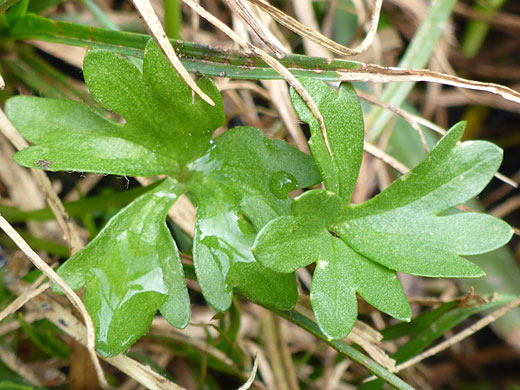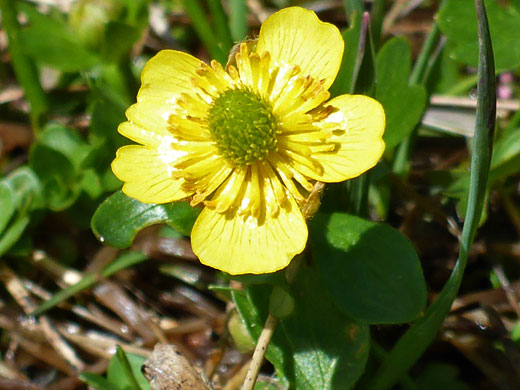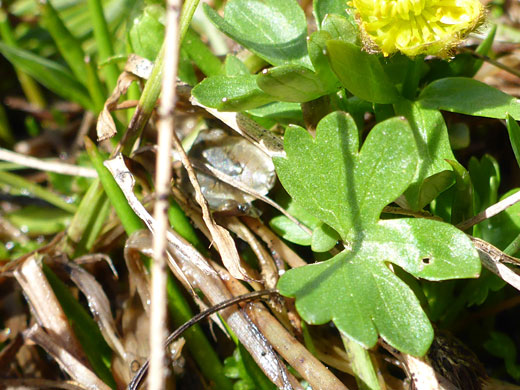Ranunculus Eschscholtzii, Eschscholtz's Buttercup
Plants > Wildflowers > Ranunculaceae > Ranunculus Eschscholtzii

Five yellow petals - flower of ranunculus eschscholtzii, Porphyry Basin Trail, San Juan Mountains, Colorado
Common name:
Eschscholtz's buttercup
Family:
Scientific name:
Ranunculus eschscholtzii
Main flower color:
Range:
The Rocky Mountain states and all states to the west
Height:
Between 2 and 10 inches
Habitat:
Meadows, open hillsides; arctic and alpine, from sea level to 13,000 feet
Leaves:
Up to 1.6 inches long and broad, ternately divided
Season:
June to August
All parts of ranunculus eschscholtzii are usually hairless, except for the undersides of the sepals, which are covered with quite long, soft hairs. The leafless stems are leaning or erect, just a few inches tall, and topped by one (usually), two or three flowers. The basal leaves are nearly completely divided into three segments, which are divided a second time into three rounded lobes, sometimes further divided. The leaves may have a few straggly hairs along the margins. Leaf surfaces are covered by tiny glands.
Flowers are formed of five short sepals, below and between five to eight longer, broader, obovate petals, up to 0.6 inches long and wide. These surround a central ring of yellow stamens around a domed disc of green pistils, which remains narrow but elongates markedly at the fruiting stage. Petals are usually slightly overlapping.
Up to five US varieties are recognized (suksdorfii, eximius, trisectus, eschscholtzii, oxynotus), differing mainly in the shape of the leaf divisions and of the leaf bases.
Flowers are formed of five short sepals, below and between five to eight longer, broader, obovate petals, up to 0.6 inches long and wide. These surround a central ring of yellow stamens around a domed disc of green pistils, which remains narrow but elongates markedly at the fruiting stage. Petals are usually slightly overlapping.
Up to five US varieties are recognized (suksdorfii, eximius, trisectus, eschscholtzii, oxynotus), differing mainly in the shape of the leaf divisions and of the leaf bases.
All Contents © Copyright The American Southwest | Comments and Questions | Contribute | Site Map







